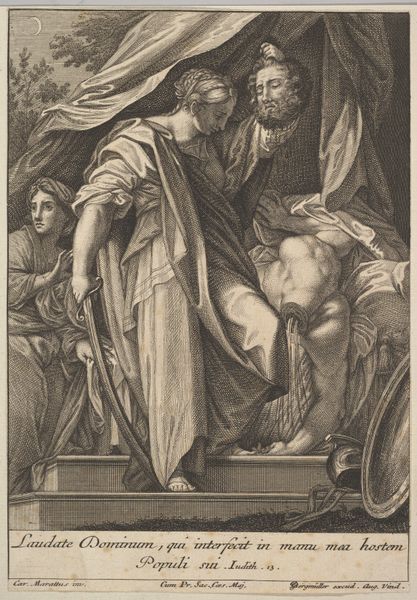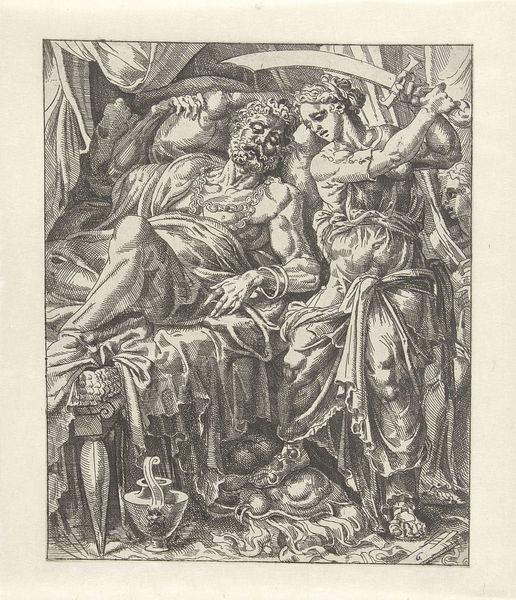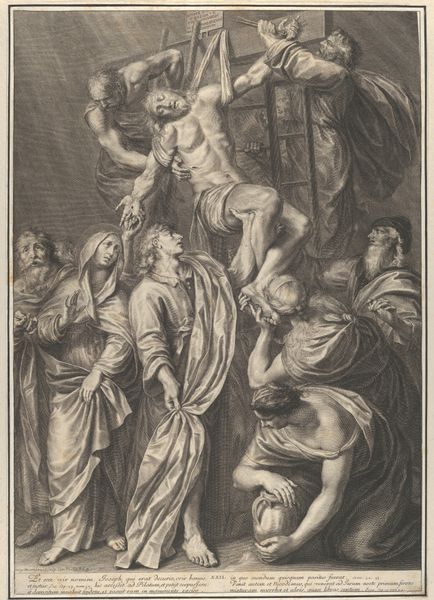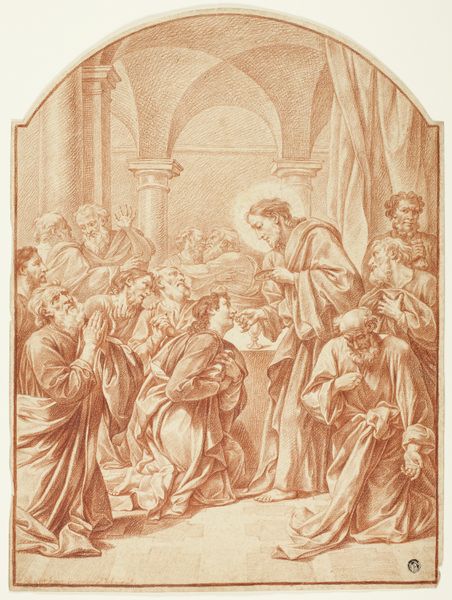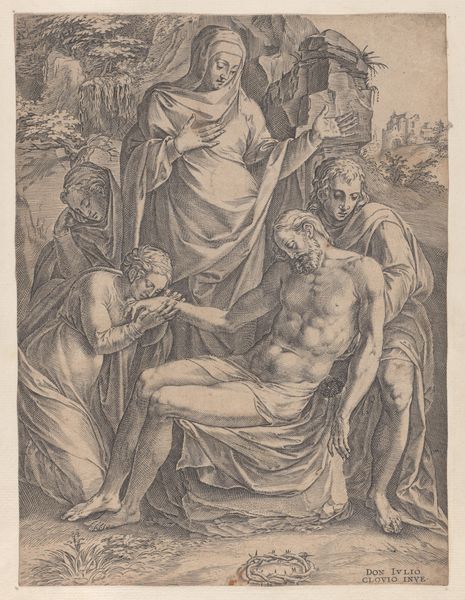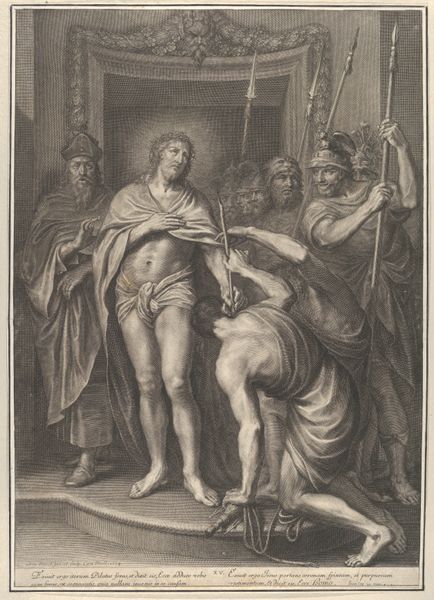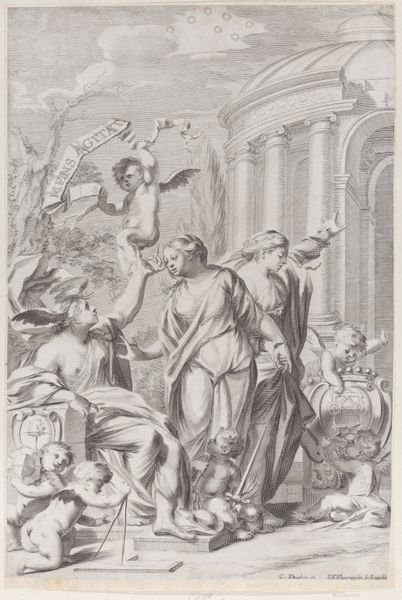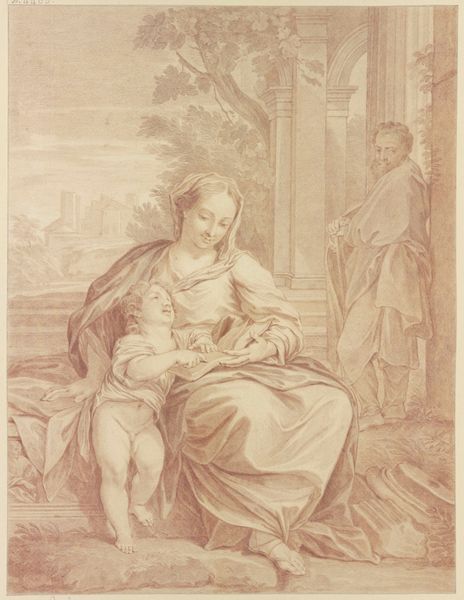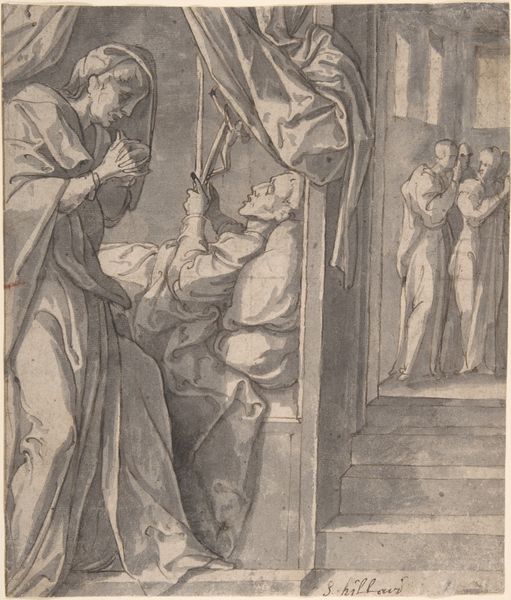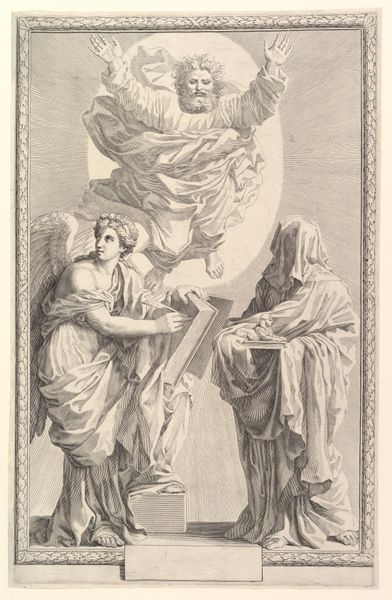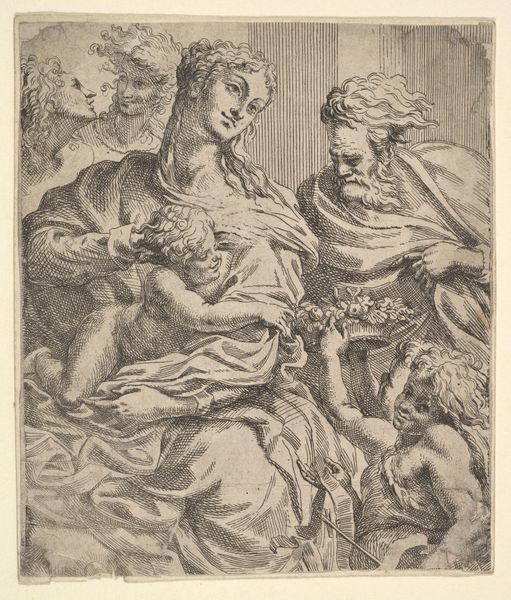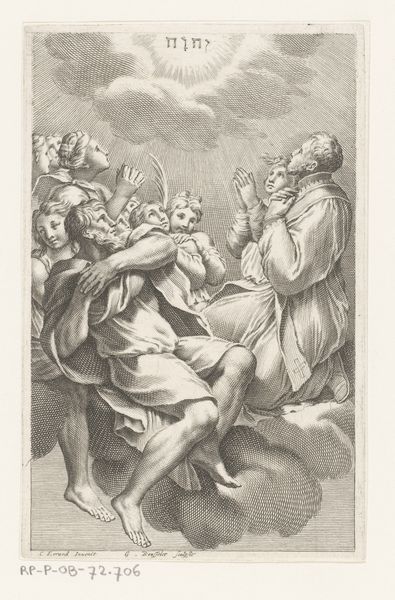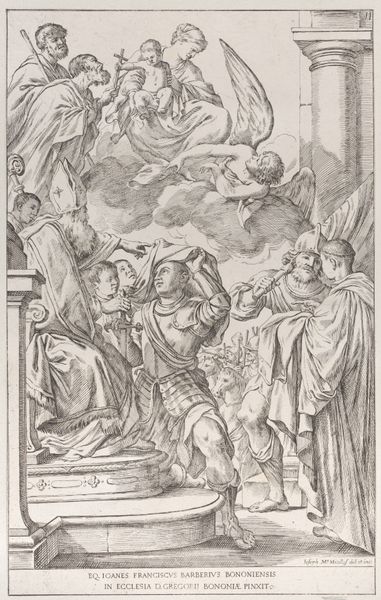
drawing, print, engraving
#
drawing
#
narrative-art
#
baroque
# print
#
figuration
#
history-painting
#
graphite
#
engraving
Dimensions: Sheet (Trimmed): 16 1/8 × 11 5/16 in. (41 × 28.8 cm)
Copyright: Public Domain
Curator: So, here we have "Judith slaying Holofernes", an engraving done by Hieronymus Ferroni around 1705, now residing at the Met. It really throws you right into the aftermath, doesn't it? Editor: Absolutely. There’s a strangely serene quality to the scene, even with the… decapitation prominently displayed. It’s all in the line work, that delicate Baroque touch that softens the horror. The theatrical lighting definitely ups the drama. Curator: That theatricality is key. The Baroque loves these big, dramatic moments, and Judith's story is perfect for it. Look at how she holds Holofernes' head, almost reverently, as if she's offering it up. Editor: Yes, the head itself is fascinating. It’s not just a gory trophy. Ferroni captured a face frozen between pain and surprise. There's a vulnerable, almost childlike quality there which is juxtaposed to Judith’s steely resolve. It’s unsettling, that mix. And notice the Latin inscription. “Laudate Dominum, qui interfecit in manu mea hostem populi sui.” Praise the Lord, who killed the enemy of his people by my hand. This is what I mean by iconography, everything carries meaning. Curator: It's also a study in contrasts – Judith's beauty versus the gruesomeness of the act. The delicate fabrics of her dress against the dead weight of the general's head. The lighting emphasizes this; it highlights Judith, putting her almost in a halo. But it also pools around Holofernes’ body, focusing our attention there too. Editor: Right. The flowing fabrics speak to Baroque sensibilities, but I read those folds of drapery not as mere decoration. Instead, they convey Judith's complex emotional state; strength masking deep turmoil, determination mixed with feminine apprehension. You also see those same qualities portrayed on her companion in the background. And consider the sword, partially hidden – hinting at deception and perhaps regret? The action has ended but the symbolic aftermath reverberates in so many visual layers. Curator: A moral paradox rendered in exquisite detail. What lingers for me is this image of the strong woman. It is hard to imagine Ferroni didn't take pleasure representing her controlled power. She has blood on her hands but she holds the symbolic weight of a nation on her shoulders. That really hits me. Editor: It all speaks to how we choose to remember—or perhaps selectively forget—the more difficult passages of our history and faith. I see the way this piece both celebrates victory and hints at sacrifice as more than meets the eye.
Comments
No comments
Be the first to comment and join the conversation on the ultimate creative platform.
